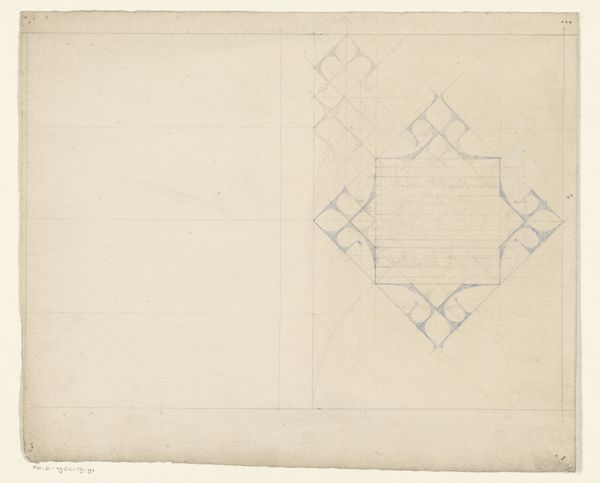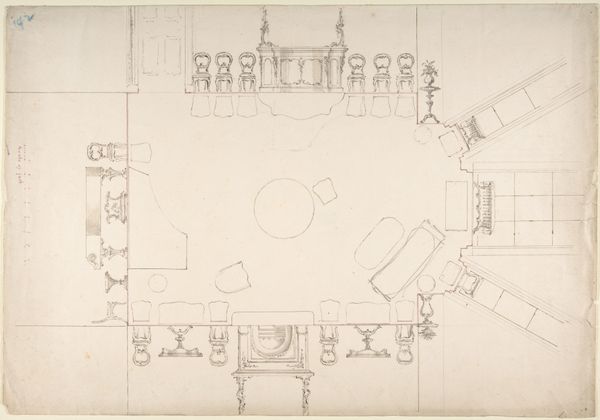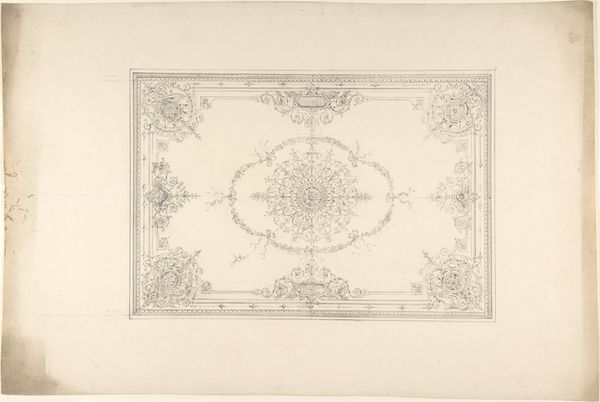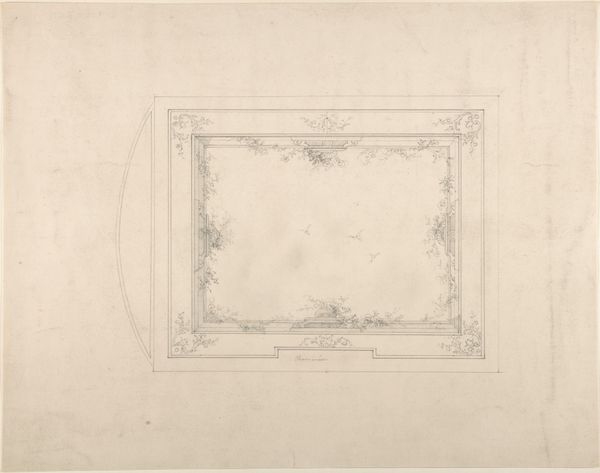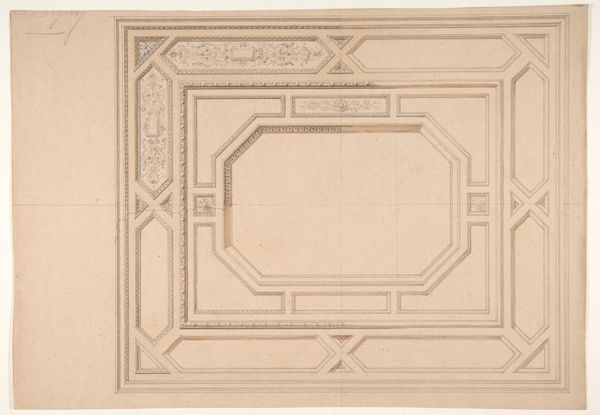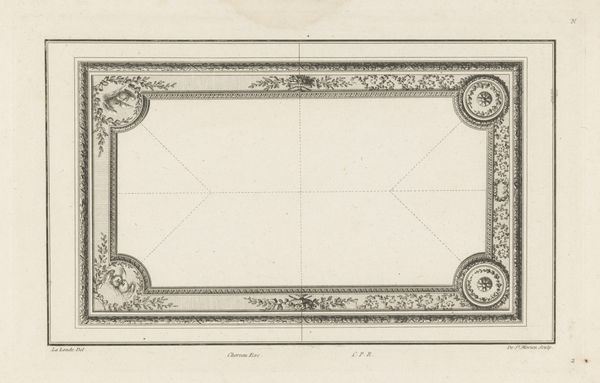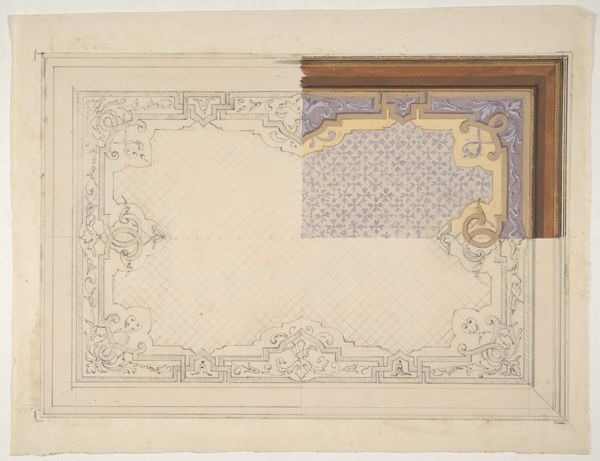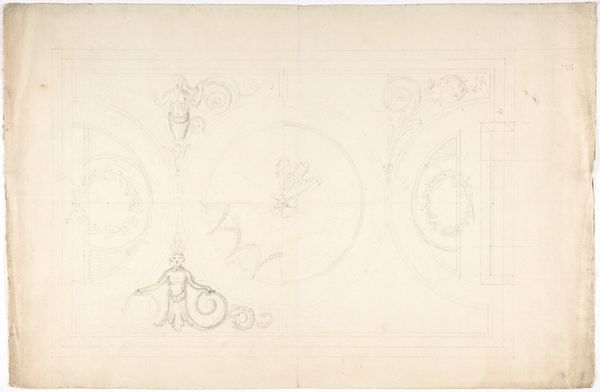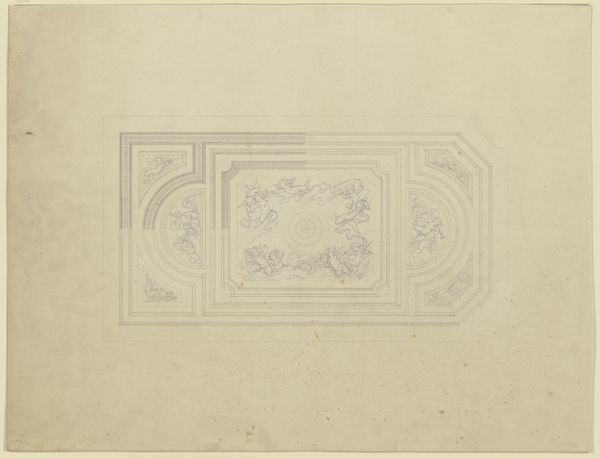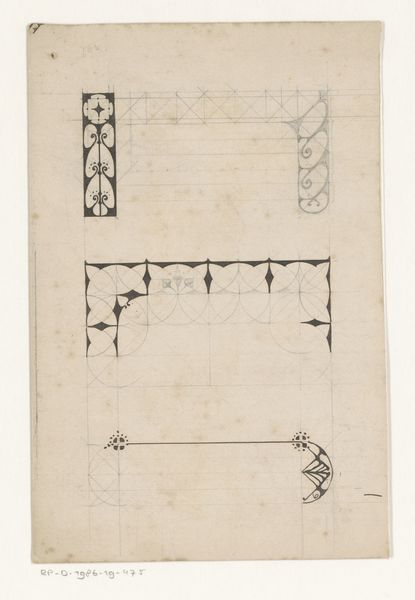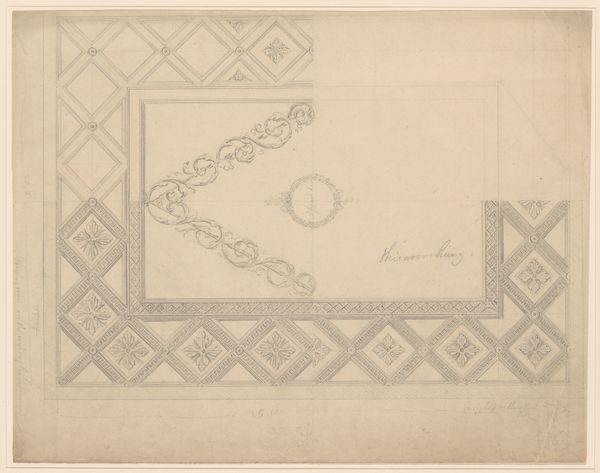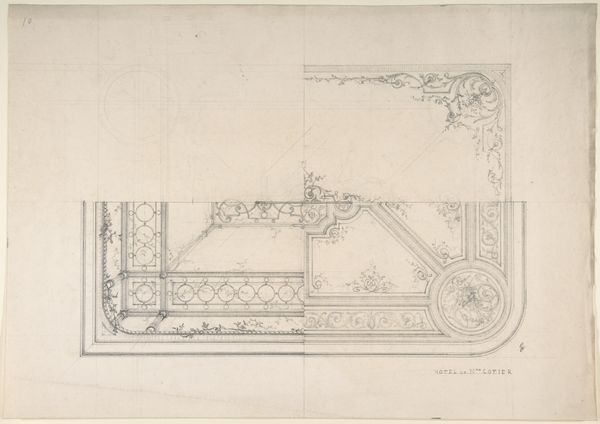
drawing, print, pencil
#
drawing
# print
#
etching
#
form
#
geometric
#
pencil
#
line
#
academic-art
#
decorative-art
Dimensions: Overall: 13 1/2 x 19 9/16 in. (34.3 x 49.7 cm)
Copyright: Public Domain
Curator: Looking up, we find a detailed, if somewhat faded, drawing entitled "Design for a ceiling." The artist, Jules-Edmond-Charles Lachaise, created it sometime between 1850 and 1900. It's currently part of the collection at the Metropolitan Museum of Art. Editor: It’s strikingly subtle, almost ethereal. The delicate pencil lines outlining geometric shapes and repeating floral motifs create a tranquil, meditative feeling, though I imagine in its full, intended painted form it would feel altogether different. Curator: Absolutely. It's fascinating how Lachaise employs linear precision to map out a complex decorative scheme. The balance between geometric form and organic detail adheres to principles seen across Academic art from that period. Observe the intricate borders – they seem almost Moorish in their detailing. Editor: Yes, the repetition within those geometric units strikes me as incredibly strategic. I can imagine the room the design was intended for was to make a statement of wealth and a declaration of European culture's reach, given it incorporates cultural reference points from beyond the continent. Who might have commissioned this? And for what kind of building was it made? Curator: Without knowing the original commission, the drawing functions, divorced from its social context, as a window into how art, during this time, was intimately intertwined with architectural structure. You have ornament serving not merely as decoration, but integral to the structural logic of the room. It seems a celebration of order. Editor: It makes you think about the power dynamics implicit in ceiling designs. The commissioner literally gets to dictate what those below them look up to. It’s visual power, designed for everyday life. Curator: A fair point indeed. We often consider art's role in monumental spaces, palaces and places of worship, where grand statements were required, but something like this shows art operating more subtly as a soft daily tool of visual dominance and quiet control. Editor: I agree entirely. The restraint employed here—the emphasis on precision over extravagance—speaks volumes about how aesthetics can act as a reflection, and enforcement, of social strata. The lines point, gently, to social hierarchy made beautiful. Curator: Well put. It reminds us to consider beyond immediate form and color; in design, structure itself delivers so much silent meaning. Editor: It truly does. Art whispers volumes, doesn’t it? Even from above.
Comments
No comments
Be the first to comment and join the conversation on the ultimate creative platform.
